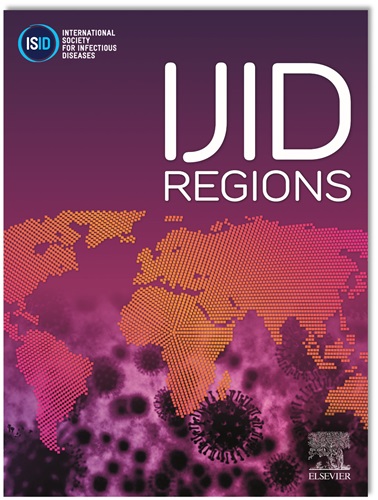Healthcare utilization among COVID-19 mRNA vaccine-associated myocarditis cases: a matched retrospective cohort study
IF 4.8
2区 医学
Q1 INFECTIOUS DISEASES
引用次数: 0
Abstract
Objectives
We evaluated all-cause healthcare utilization among those with vaccine-associated myocarditis, compared to vaccinees without postvaccination myocarditis.
Methods
We conducted a retrospective cohort study in individuals aged 12 and older who received COVID-19 mRNA vaccination in British Columbia. Exposure was defined as an ED visit or hospitalization for myocarditis within 21 days postvaccination. The primary outcome was healthcare utilization. Ratios of rate ratios (RRRs) for exposure-associated healthcare utilization were calculated using a difference-in-differences (DiD) analysis.
Results
In the postindex period, the exposed and unexposed groups showed substantial utilization rate difference (RD = 15.30 [95% CI, 14.47-16.13). A 51% overall increase in healthcare utilization was observed over 18 months among exposed individuals (RRR, 1.51 [95%CI, 1.08-2.11]). In the initial six months, healthcare utilization surpassed the 18-month estimate, exhibiting a 125% increase (RRR, 2.25 [95%CI, 1.43-3.52]), while the last 12 months showed no statistically significant change (RRR, 1.03 [95%CI, 0.72-1.47]). An additional 9.1 (95%CI, 8.53-9.71) visits per person were attributed to vaccine-associated myocarditis over 18 months (total excess = 938.26 healthcare visits).
Conclusion
The initial surge in healthcare visits postexposure, mainly outpatient follow-ups, followed by a return to baseline rates, indicates a positive prognosis and supports the vaccine's safety profile.
COVID-19 mRNA 疫苗相关心肌炎病例的医疗保健使用情况:一项匹配的回顾性队列研究。
目的我们评估了疫苗相关心肌炎患者与接种后未患心肌炎的疫苗接种者相比的全因医疗保健使用情况:我们对不列颠哥伦比亚省接种 COVID-19 mRNA 疫苗的 12 岁及以上人群进行了一项回顾性队列研究。接种后 21 天内因心肌炎到急诊室就诊或住院即为暴露。主要结果是医疗保健利用率。采用差异分析法(DiD)计算了与暴露相关的医疗利用率比率(RRRs):结果:在指数后阶段,暴露组和未暴露组的使用率差异很大(RD = 15.30 [95% CI, 14.47-16.13)。在 18 个月内,暴露人群的医疗保健使用率总体增加了 51%(RRR,1.51 [95%CI,1.08-2.11])。在最初的 6 个月中,医疗保健使用率超过了 18 个月的估计值,显示出 125% 的增长(RRR,2.25 [95%CI,1.43-3.52]),而在最后的 12 个月中,没有显示出统计学上的显著变化(RRR,1.03 [95%CI,0.72-1.47])。在 18 个月内,每人因疫苗相关性心肌炎多就诊 9.1 次(95%CI,8.53-9.71 次)(多就诊总次数 = 938.26 次):结论:暴露后就诊人次的最初激增(主要是门诊随访)表明预后良好,并证明了疫苗的安全性。
本文章由计算机程序翻译,如有差异,请以英文原文为准。
求助全文
约1分钟内获得全文
求助全文
来源期刊
CiteScore
18.90
自引率
2.40%
发文量
1020
审稿时长
30 days
期刊介绍:
International Journal of Infectious Diseases (IJID)
Publisher: International Society for Infectious Diseases
Publication Frequency: Monthly
Type: Peer-reviewed, Open Access
Scope:
Publishes original clinical and laboratory-based research.
Reports clinical trials, reviews, and some case reports.
Focuses on epidemiology, clinical diagnosis, treatment, and control of infectious diseases.
Emphasizes diseases common in under-resourced countries.

 求助内容:
求助内容: 应助结果提醒方式:
应助结果提醒方式:


